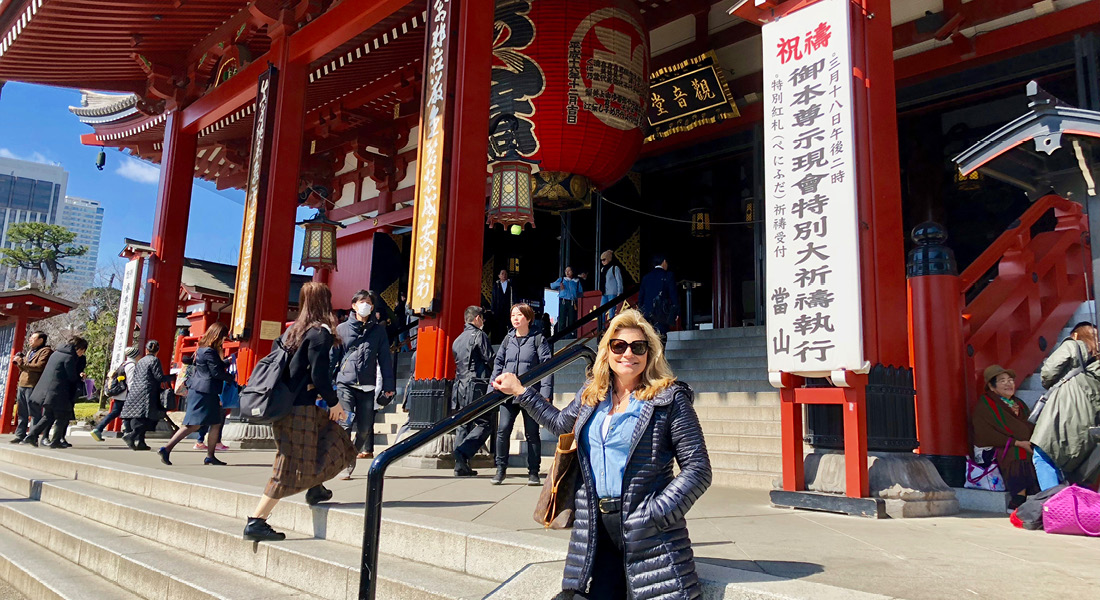
If you’re from the United States (especially the east coast), you know that America runs on Dunkin’. Driving down a mile stretch of road will lead you to at least 3 out of the 8,500+ locations. Now imagine Japan – a country 26x smaller than the US – filled with over 80,000 temples. You see where this is going yet? There are A LOT of temples in Japan, but here are 5 temples to visit that impress travellers from all around the world.
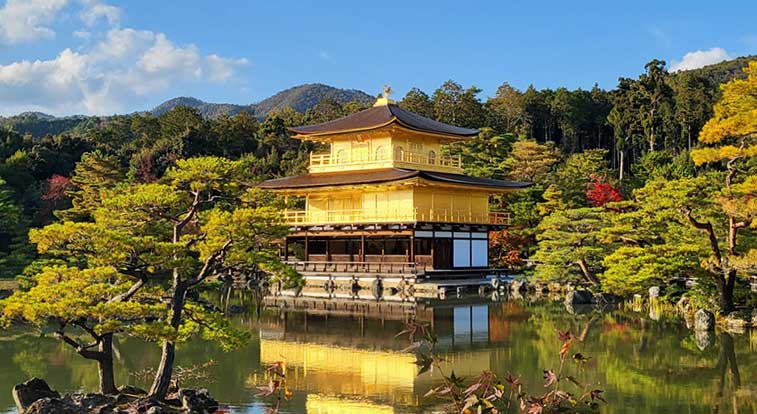
Kinkaku-ji Temple – Kyoto
Welcome to the Golden Pavilion, also known as the Kinkaku-ji temple. As one of the most famous and iconic temples in Japan, there’s no questioning why this is the most visited site in all of Kyoto. The first thing you’ll notice here are the 3-stories of gold-leaf covered temple that overlook a neighboring pond. If you find yourself lucky enough to visit in the early morning whilst the weather is calm, you’ll notice breathtaking reflections of the temple in the surrounding pond. If you only have time to visit in the afternoon, don’t worry! It’s said that at this temple, it’s nearly impossible to take a bad picture as it’s one of the most photogenic places in Japan.

Senso-ji Temple – Tokyo
Senso-ji in Tokyo, the largest and most popular temple, also holds the title as the oldest. Built in the 7th century, there’s no doubt (if you’re looking for ancient history) that this is the temple to visit. Outside, you’ll notice the structure boasts a 5-story pagoda along with an enormous paper lantern – an area that is a popular spot for photos. In addition to a great photo souvenir, Senso-ji is in an area that’s great for finding quality souvenirs at local shops surrounding the temple.
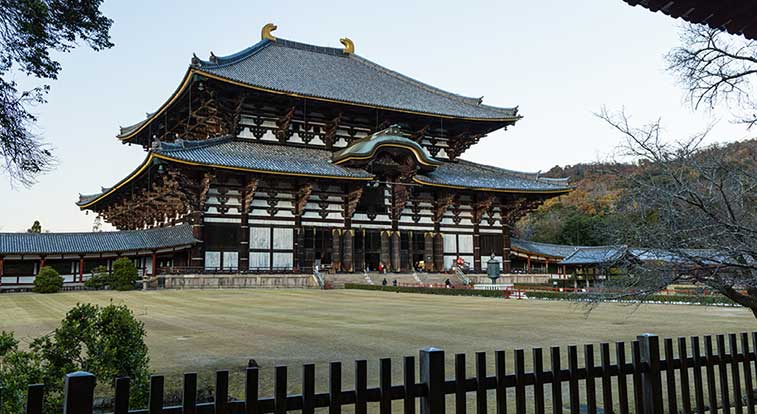
Todai-ji Temple – Nara
History lovers must put the Todai-ji temple on their Japan bucket list. As one of the biggest and most breathtaking landmarks, this monument offers a lot of historical insight. Starting with the temple itself, Todai-ji was the world’s largest wooden buildings for a millennium. It also currently houses the largest bronze Buddha statue in the world. Surrounding the temple in Nara, you’ll find many traditional Japanese temples and shrines to freely explore. If you’re spending some extra time in the area, be sure to visit the Nara Deer Park where you can pet and purchase snacks to feed the very friendly (politely bowing) deer. Getting to Nara from Kyoto or Osaka takes about 45 minutes – just hop on the local express train!
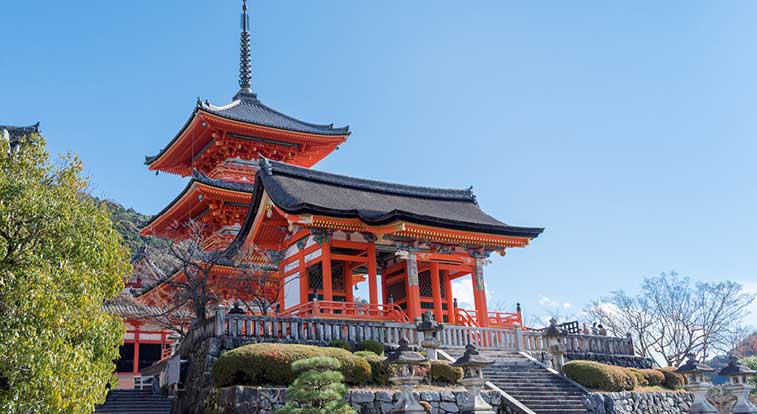
Kiyomizu-dera Temple – Kyoto
Visit the Kiyomizu-dera temple when you explore Kyoto! As one of Japan’s most celebrated Buddhist temples, its construction was completed in the 8th century. More specifically, this temple was founded in 780 and is neighboring the Otowa Waterfall east of Kyoto. The name Kiyomizu-dera (清水寺) translates to “Pure Water Temple” and boasts many photo opportunities in the immediate surrounding area. If you’re looking to check another UNESCO site off your bucket list, you’re in luck! In 1994, Kiyomizu-dera was officially recognized as a UNESCO world heritage site in Kyoto, Japan.
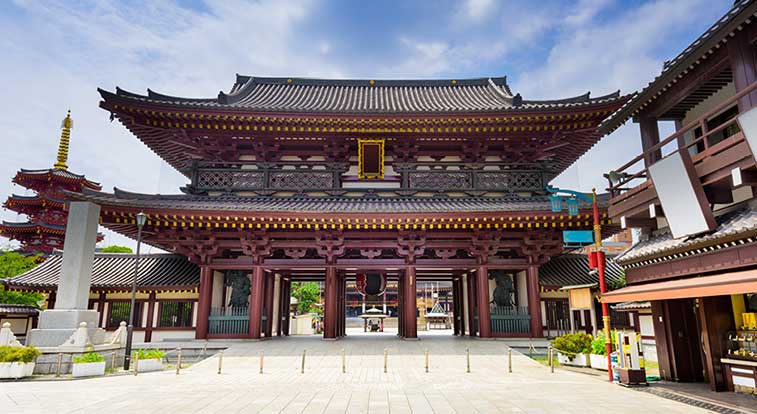
Kawasaki Daishi Temple – Kawasaki
Built more recently (if you consider the year 1128 recent) is the Kawasaki Daishi Temple located in central Kawasaki – a 30-minute train ride from Tokyo. In the main hall you’ll find a concrete and steel structure where a statue of Kobo Daishi, the founder of Japanese Shingon Buddhism, is housed. This temple’s original structure was destroyed during World War II and has since been reconstructed to modern Heian Period architecture. Although rebuilt, the Kawasaki Daishi temple is still a worthwhile stop with plenty of local shops and markets to visit along the way.
img hereJapanese Temple Etiquette
Since most temples in Japan welcome tourists, there are a few important rules to keep in mind:
- Always be calm, respectful, and use quiet voices.
- Photos are allowed to be taken outside temple grounds, but typically not inside of the temple itself.
- Some temples require you to remove your shoes before entering. This means that your shoes must stay outside, or a bag will be provided for you to carry them throughout your visit.
- Temples are mostly free to visit in Japan, although some do cost money (usually less than 500 Yen, or $5 USD.
- Kimono rental shops are real, and you can wear one for photos at Japanese temples. This is a very normal and a widely accepted thing to do in Japan.

